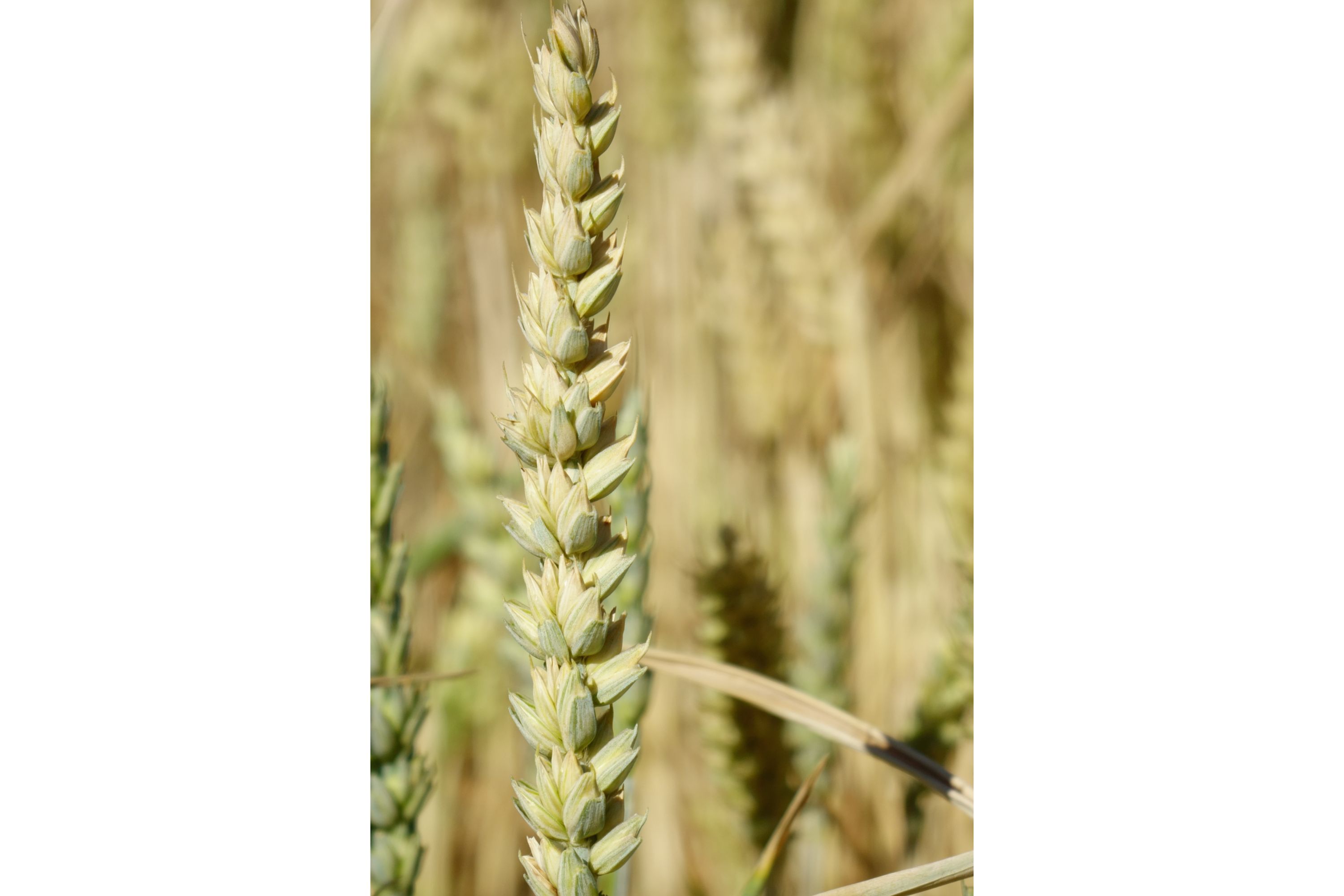Common wheat
(Triticum aestivum)

Description
Common wheat (Triticum aestivum), also known as bread wheat, is a cultivated wheat species. About 95% of wheat produced worldwide is common wheat; it is the most widely grown of all crops and the cereal with the highest monetary yield. Common wheat was first domesticated in Western Asia during the early Holocene, and spread from there to North Africa, Europe and East Asia in the prehistoric period. Naked wheats (including Triticum aestivum/durum/turgidum) were found in Roman burial sites ranging from 100BCE to 300CE. Wheat first reached North America with Spanish missions in the 16th century, but North America's role as a major exporter of grain dates from the colonization of the prairies in the 1870s. As grain exports from Russia ceased in the First World War, grain production in Kansas doubled. Worldwide, bread wheat has proved well adapted to modern industrial baking, and has displaced many of the other wheat, barley, and rye species that were once commonly used for bread making, particularly in Europe. Numerous forms of wheat have evolved under human selection. This diversity has led to confusion in the naming of wheats, with names based on both genetic and morphological characteristics. For more information, see the taxonomy of wheat. Bread wheat is an allohexaploid (an allopolyploid with six sets of chromosomes: two sets from each of three different species). Of the six sets of chromosomes, two come from Triticum urartu (einkorn wheat) and two from a species related to Aegilops speltoides. This spontaneous hybridisation created the tetraploid species Triticum turgidum (an ancestor of wild emmer wheat and durum wheat) 580,000–820,000 years ago. The last two sets of chromosomes came from wild goat-grass, Aegilops tauschii, 230,000–430,000 years ago. Recent research suggest that T. macha originated from a hybrid cross between T. aestivum and wild emmer wheat. Free-threshing wheat is closely related to spelt. As with spelt, genes contributed from Aegilops tauschii give bread wheat greater cold hardiness than most wheats, and it is cultivated throughout the world's temperate regions. Modern wheat varieties have been selected for short stems, the result of RHt dwarfing genes that reduce the plant's sensitivity to gibberellic acid, a plant hormone that lengthens cells. RHt genes were introduced to modern wheat varieties in the 1960s by Norman Borlaug from Norin 10 cultivars of wheat grown in Japan.
Taxonomic tree:







